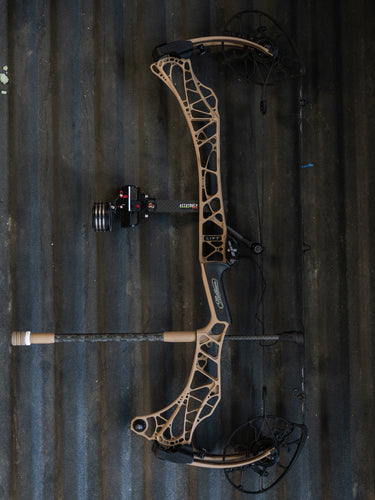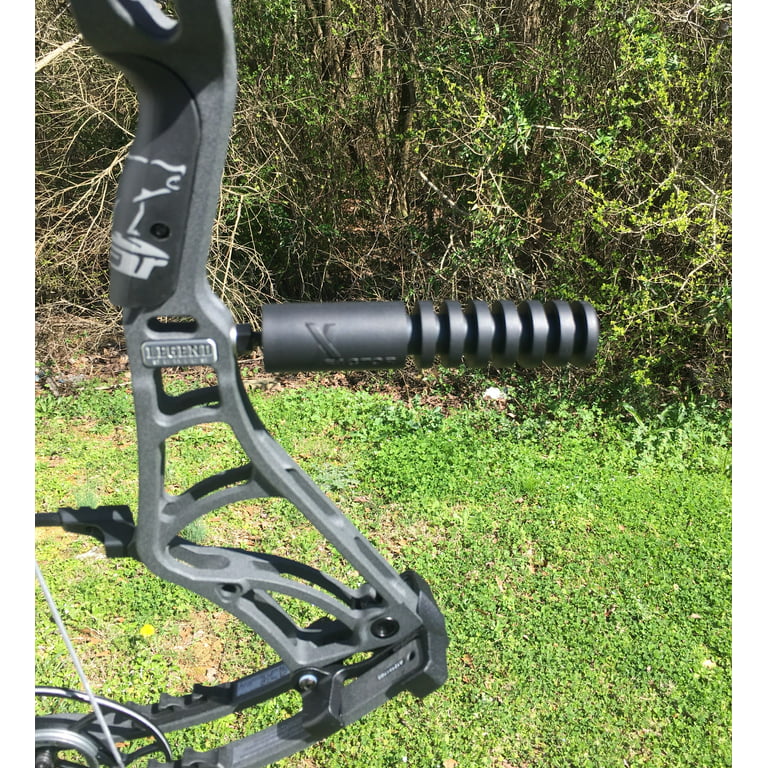Achieve Pinpoint Accuracy in Archery With the Ideal Substance Bow Stabilizer: Whatever You Need to Know
One key aspect that can significantly affect the precision of a shot is the substance bow stabilizer. By understanding the relevance of a quality stabilizer, exploring the different kinds readily available, considering necessary elements in the decision-making procedure, understanding proper installation methods, and carrying out pointers for making the most of accuracy, archers can boost their performance to new heights.
Significance of a High Quality Stabilizer
Quality stabilizers play a vital duty in boosting the precision and precision of a compound bow shooter's aim. These devices are not mere devices yet integral components that considerably affect the performance of the bow. By minimizing vibrations and torque, stabilizers assist preserve the bow's balance during the shot, resulting in a more regulated and secure launch.

Furthermore, quality stabilizers can improve the shooter's overall comfort and experience by minimizing hand shock and sound degrees. This not just boosts the shooting experience yet also minimizes the risk of developing exhaustion or pain throughout expanded session or competitors. Finally, buying a high-quality stabilizer is important for any serious substance bow shooter aiming to achieve exact and constant results.
Types of Substance Bow Stabilizers

Variables to Consider When Picking
Thinking about the diverse sorts of substance bow stabilizers available, archers have to very carefully review essential variables to make a notified choice on their selection. The very first crucial aspect to take into consideration is the length of the stabilizer. Longer stabilizers use even more stability and equilibrium but may be troublesome to navigate and lug, while shorter stabilizers are lighter and much more hassle-free but may not supply as much stabilization. Archers need to discover an equilibrium based upon their shooting style and preferences. One more vital factor is the weight of the stabilizer. Much heavier stabilizers can help in reducing vibration and enhance precision, yet they might create fatigue during long shooting sessions. Lighter stabilizers are much easier to handle however may not use the very same level of stability. Furthermore, archers must take into consideration the product of the stabilizer. Carbon fiber stabilizers are light-weight and durable, while light weight aluminum stabilizers are tough yet might be heavier. Evaluating these elements will assist archers select the find suitable substance bow stabilizer that matches their specific demands and boosts their shooting efficiency.
Proper Installment Methods
To guarantee optimal efficiency and performance of a compound bow stabilizer, specific and right installment methods are important. Correct setup begins with picking the suitable stabilizer for your bow type and shooting design. Once you have the ideal stabilizer, the initial step is to install the bow on a secure bow press to soothe tension from the arm or legs. Next off, affix the installing brace to the riser, ensuring it is securely fastened with the given screws or bolts. It's essential to straighten the stabilizer with the bow's centerline to maintain equilibrium and security.
After attaching the stabilizer, make sure it is tightened up to the supplier's recommended torque specs to stop any loosening during shooting. Furthermore, consider including resonance dampeners or weights to tweak the stabilizer's performance. Do an examination shot to examine the bow's equilibrium and adjust the stabilizer as needed. By following these specific installation techniques, you can optimize the performance of your substance bow stabilizer useful reference and boost visit the website your total archery experience.
Tips for Making Best Use Of Precision

Another key tip for improving precision is to keep a constant draw. Efficiently attracting the bowstring back without jerky motions can result in more regular shots. Furthermore, method correct breathing techniques. Holding your breath while aiming can create stress and impact your accuracy. Rather, take a deep breath, breathe out half of it, and hold the remaining breath for a moment while taking your shot.
Last but not least, constant practice is important for honing your abilities and enhancing precision. Consistently shooting with your compound bow stabilizer and concentrating on these suggestions can help you attain pinpoint precision on a constant basis.
Final Thought
In conclusion, selecting the ideal compound bow stabilizer is critical for accomplishing determine precision in archery. By investing in a top quality stabilizer and following these guidelines, archers can boost their shooting performance and general experience.
The most usual types include sidebar stabilizers, front stabilizers, and back stabilizers - compound bow stabilizer. Back stabilizers, or back stabilizers, link to the back of the bow, neutralizing the weight of accessories like quivers and sights to improve security throughout the intending process. Longer stabilizers provide more security and balance but may be troublesome to bring and steer, while shorter stabilizers are lighter and much more practical however might not supply as much stablizing. Carbon fiber stabilizers are light-weight and resilient, while light weight aluminum stabilizers are tough yet might be larger. As soon as you have the appropriate stabilizer, the initial action is to place the bow on a secure bow press to alleviate tension from the arm or legs
Comments on “Fine-Tune Your Goal: The Scientific Research Behind Compound Bow Stabilizers”